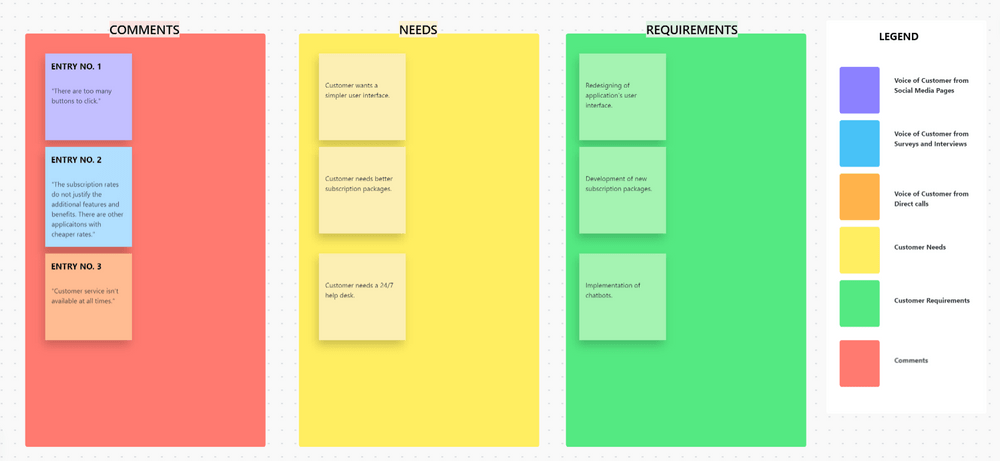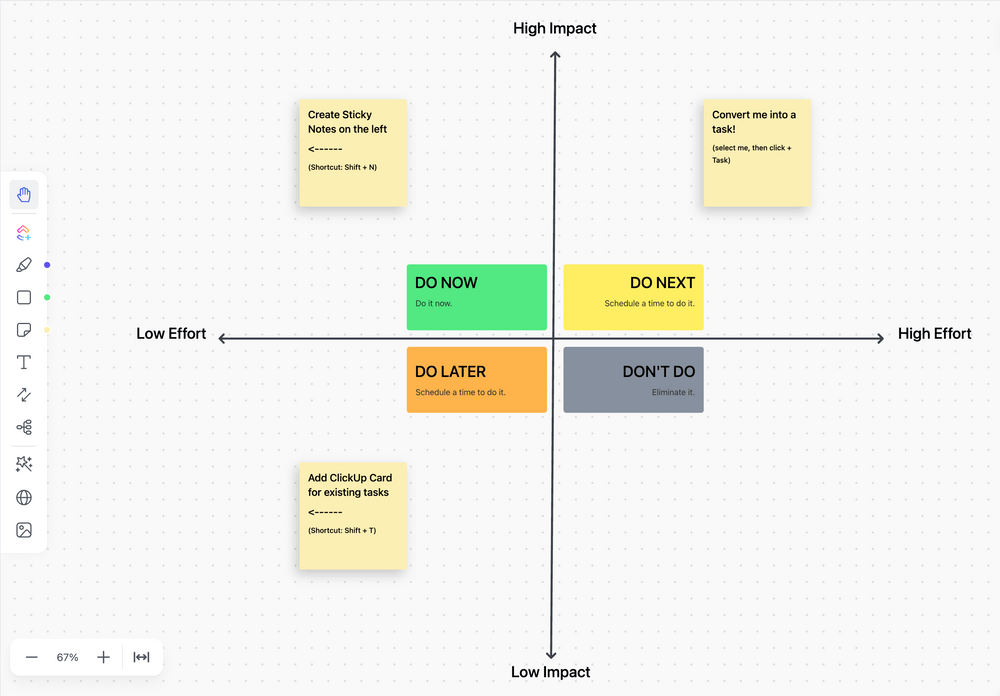4 Free Perceptual Mapping Templates & Examples

Sorry, there were no results found for “”
Sorry, there were no results found for “”
Sorry, there were no results found for “”
Imagine you’re deep into a strategic marketing brainstorming session. Charts, data, and post-its clutter the boardroom. The team is circling product positioning, yet there’s an unmistakable haze of uncertainty.
What if we told you there’s an often-overlooked tool that could be your beacon in these scenarios? Enter the world of perceptual mapping.
We’ll unpack the compelling realm of perceptual mapping and templates. If you’re a project manager keen on refining your marketing strategies, this is where you need to be!
Think of a perceptual map as a positioning map. It’s a clear visual chart that paints a picture of how customers see a product or service compared to its rivals.
Drawing these views on a graph with two axes gives us a simple yet powerful way to compare two key factors, like product quality against its price or luxury against practicality.
But here’s the cool part: a positioning map is more than just placing dots on a chart. This map can reveal deep market insights.
For example, if many products cluster in one area of the map, that might signal a crowded market segment. A less populated area? That could be an untapped opportunity waiting to be explored.
Businesses can better grasp their competitive scene using a perceptual mapping template. They can see where they shine, spot potential challenges, and find unique ways to stand out.
In short, it’s a tool for understanding the market today and a guide for planning tomorrow’s moves.
Creating a perceptual map starts by identifying the two main attributes or dimensions of customer perception you want to compare. These attributes should be crucial in influencing consumer decisions.
Once identified, survey data can be collected and plotted onto a graph, each axis representing one of the attributes.
For instance, in the smartphone market, you might compare phones based on an example perceptual map with ‘Price’ (high to low) and ‘Battery Life’ (short to long). Plotting various brands on this map lets you quickly discern market positions and identify gaps.
Creating a perceptual map is much like painting a picture of the marketplace. However, not all maps are created equal.
A truly effective perceptual map exhibits several key characteristics that ensure its usability, accuracy, and relevance. Here’s a detailed breakdown:
Also Read: RACI matrix examples

Understanding your product’s place in the target market with positioning maps has never been easier. The ClickUp Perceptual Map Template is a game-changer for businesses aiming to understand how they fare against competitors.
ClickUp’s template doesn’t merely visualize data; this perceptual map tells a compelling story about your product’s unique selling propositions and your customer’s perception of those USPs. This accurate perceptual map is versatile across various market spectrums and geared to empower strategic decisions.
An essential tool for marketers and strategists, this can be used for product positioning maps to help clarify your product’s unique selling points. It’s user-friendly, adaptable to your target market, and offers insights to guide decision-making.
Dive deep into the psyche of your customers. Understand their perceptions, needs, and interactions related to your product. With a visual snapshot of market dynamics, perceptual maps help you tailor your strategies to ensure your product stands out. Couple perceptual maps with ideation techniques, and you have a comprehensive toolkit.

Voices matter, especially those of your customers. The ClickUp Voice of the Customer Template is your key to understanding their needs, desires, and pain points. Ideal for marketers and customer service teams, this template ensures that consumer perception isn’t just collected but analyzed for actionable insights.
It streamlines the marketing planning process, allowing teams to act swiftly on that consumer perception, bettering products and services in tune with customer expectations.
ClickUp’s template is brimming with features to ensure a holistic mapping experience. Use Custom Fields to categorize your tasks and custom statuses to define, allocate, and track progress toward task completion.
With custom views, you can start with a whiteboard template and then build a workflow of Gantt charts, calendars, checklists, and more!

Stay ahead of the competitive landscape with the ClickUp Competitor Tracking Template. In a world where market dynamics shift rapidly, having a better understanding of direct and indirect competitors is invaluable.
Tailored for analysts and strategy teams for market positioning, this offers a structured way to track, analyze, and respond to competitor actions. Dive into project management tips for a comprehensive understanding.
Set clear objectives to start your competitor tracking project on the right foot. Once you have that goal in mind, you can create and assign tasks that build toward that end. A ClickUp Doc can be an ideal space for this brainstorming session!
Once you have your tasks, categorize them in ClickUp’s Board View, prioritize them, and set deadlines with the ClickUp Goals feature.

Prioritizing multiple competing priorities can feel like walking on a tightrope. Introducing the ClickUp Impact Effort Matrix, your safety net in making better-informed decisions!
This tool channels your attention toward tasks that maximize impact with optimal effort. You can sync this template with a whiteboard project management approach for the best results.
The Impact Effort Matrix is a 2×2 matrix with impact on one axis and effort on the other. You’re looking for the stuff in the top left quadrant of your matrix. That’s where you’ll find your high-impact, low-effort opportunities. Start here, then tackle your high-impact, high-effort ideas—these will be the tougher nuts to crack.
This matrix helps your team visualize the road ahead, makes it easier to prioritize tasks, and offers a clear rubric for making decisions.
In this template, you’ll find a comprehensive list of every task your team is evaluating, alongside impact analysis and a score that evaluates the priority for each task. You can then peek at your resources in the same template to assign each task to the person best suited for the job.
ClickUp is more than a suite of perceptual maps or a one-dimensional platform.
At its core, ClickUp provides a central hub where teams can seamlessly plan, execute, monitor, and iterate on projects. Its suite of features goes beyond mere task lists and deadlines.
With customizable task views, interactive Gantt charts, and intuitive Kanban boards, teams can choose the workflow that suits them best. Explore different features free forever to build a perceptual map and collaborate with your team!
© 2026 ClickUp